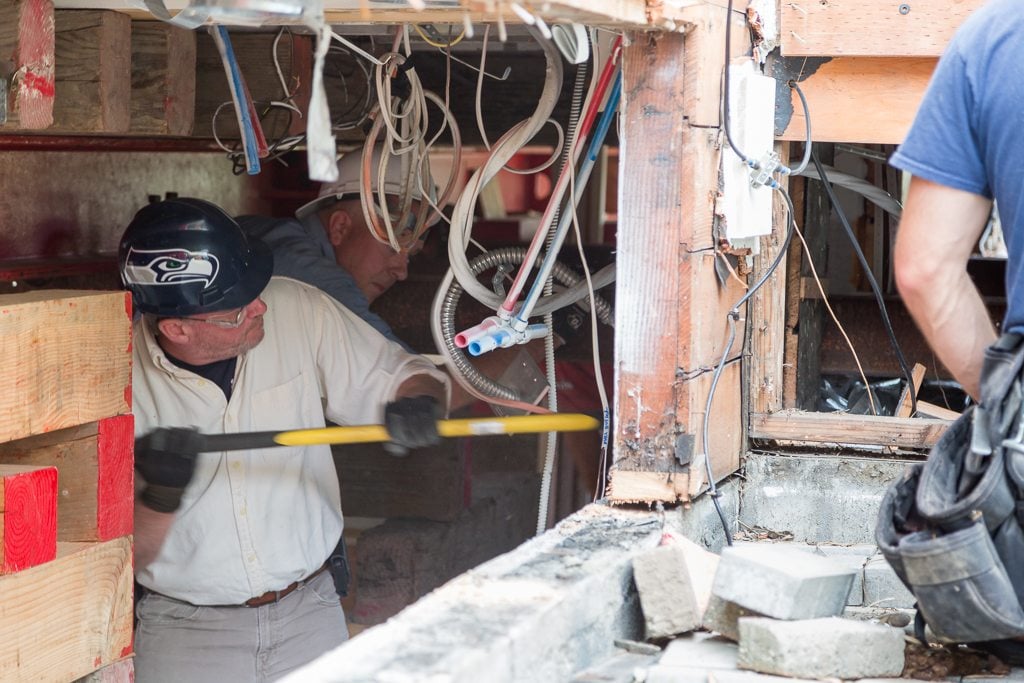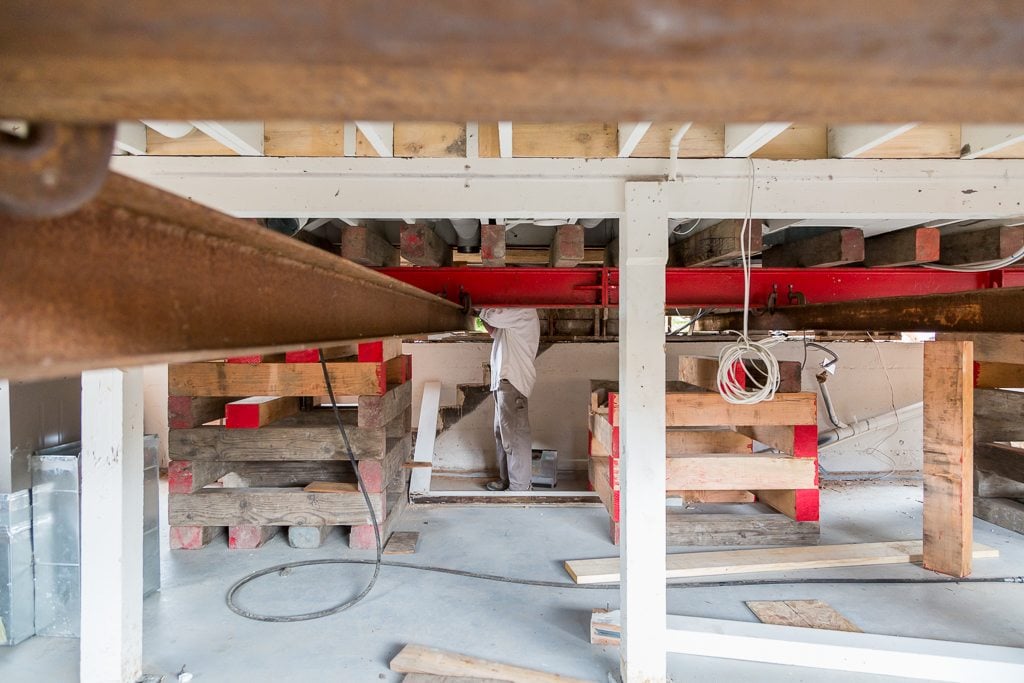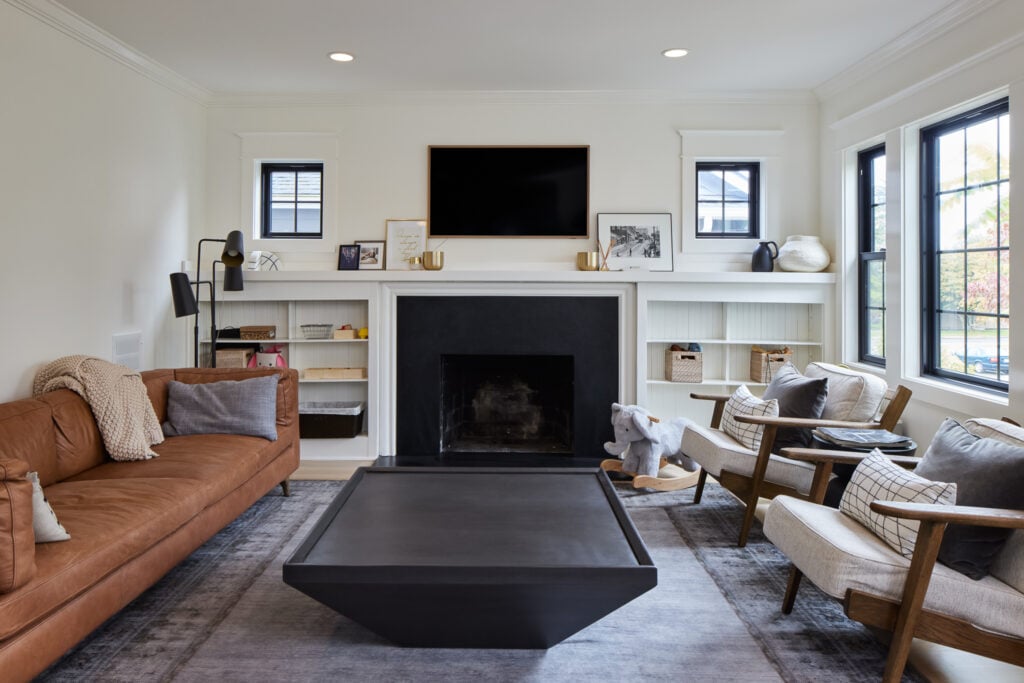No, we’re not talking about a Disney movie—homes can actually be lifted using manpower and modern technology, as opposed to balloons. It’s actually a fairly common endeavor for homeowners looking to remodel. Typical reasons for house lifting include: repairing the foundation, basement remodeling or protecting against water damage.
Last week, we lifted—with the lead of talented lifting pros D.B. Davis—a home in the Ballard neighborhood of Seattle so that we could begin remodeling the space into a livable basement. Our awe of the recent lift led us to write this informational post about how a house lift is conducted. Photos provide some excellent points of view on the process, and photos of the this house lift and basement remodel are now online.
Reasons for Lifting a House
Lifting a home is a great way to add space and increase value without taking away square footage from your yard. It’s also a surprisingly economical way to approach a change to your living space, as it avoids the costs of selling and purchasing a new home (broker and legal fees, taxes, moving costs, etc). Typical reasons for lifting a house include:
- Excavating a new basement
- Adding head room and increasing current basement functionality
- Adding another story to the home
- Repairing an old or deteriorating foundation
- Protecting against or retrofitting for flooding
House Lifting Companies
Though house lifting is common, that doesn’t mean it’s not a hefty process with a substantial bill. Finding the right, experienced house lifting company is the key to the whole process. We’re lucky to work with D.B. Davis Structural Moving & Raising. The owner, Dell—a 5th generation lifter—is an extremely approachable and efficient guy. It was clear that with his great leadership, the skilled team had the entire process down to a science—as any good lifting company should. Plus, their years of experience and very successful lifts make them the most appropriate choice for the job. They even lifted the real-life “Up” home previously mentioned (see photo) and “can move anything manmade” including bridges, boats and heavy industrial buildings! Along with experience, a qualified lifting company should always have appropriate liability insurance policy.


Bottom two images provided by D.B. Davis
Before the Lift
Prior to the house lifting, it is determined whether or not a new foundation or additional concrete will need to be poured. Some excavation work may also be necessary. As these considerations are being made, the homeowner will be asked to thoroughly clean their basement of personal belongings. Exterior cleaning will also take place, since patios, decks and landscaping will often need to be removed or relocated to some degree. Utilities (electricity, plumbing, phone, etc.) will also have to be shut off and disconnected, while pipes, plumbing and ductwork that hang below the floor joists will be removed. As a design-build contractor, we are normally the orchestrators of this preparation and the lift for our clients.

The House Lifting Process
Lift, support, and lift again. That’s house lifting in a nutshell, but the reality is much more intricate and precise than that. The larger and heavier the house, the more complicated the process is likely to be. Every wall, nail and brick is an interconnected piece of the puzzle that is a home. Surprisingly, regardless of size, most structurally sound homes can be lifted in a single day. Before lifting, it’s important to know that there will sometimes be small imperfections to repair as a repercussion of the lift. Small cracks in plaster or siding can easily be fixed by a general contractor. The veterans at D.B. Davis have a great record: 8 out of 10 homes they lift do not show any signs of being raised. While some structural imperfections are possible, you don’t have to worry about belongings inside the home. The lift is incremental and shouldn’t shift furniture and belongings by any noticeable amount.
Depending on the reason for lifting, the concrete foundation (aka slab) may be lifted too, or left on the ground level. Most often, the foundation stays put and steel beams are inserted directly below the floor joists for support, taking into account the internal floorplan and heaviest areas of the home. This creates a stable base to which jacks and cribbing can be applied.



There are two main components at work during a house lift: hydraulic jacks are used for house lifting, while cribbing is used for support. The jacks are placed evenly under the home and hooked up to a unified hydraulic jacking machine that can raise each jack an exact amount at the same time. Usually, lifters will raise the home only a few inches to start. At this point in time, the home is checked and verified that it is safe to continue lifting. After lifting, cribbing is stacked so that a sturdy, interlocking system of timber is supporting the house. Cribbing is the term used to describe the Lincoln-Log-like wood beams that are cross stacked to form a supportive base for the whole house. Good cribbing is moisture-sealed to ensure its stability and longevity. The lifter will make sure that with each lift, the cribbing stacks are within 1/8” of one another so that the home is level and does not shift. Safety and stability are of the upmost importance.
After the House is Lifted
Once the house is lifted to the pre-determined amount, the contractor can immediately get to work. In the case of our Ballard lift, as soon as the lift wrapped up we were under the home installing temporary walls. Later in the week we worked on framing the new basement walls and laying foundation where necessary. When we’ve finished this step of the remodel, D.B. Davis will come back out to lower the home into place (it’s about a foot higher than its final height at the moment) and remove the cribbing. Then our crew will begin working on interior building, plumbing, panting, fixtures and everything in between.
As housing prices continue to rise in the Seattle metro area, more homeowners are choosing to renovate instead of move. The cost to finish a basement is often thought of as a good investment for someone looking to live in the home long-term. Since functional basements weren’t common decades ago, most mid-20th century basements, especially in the Pacific Northwest, were built as storage space for coal and furnaces or simply weren’t build out at all. We consistently receive inquiries from people who want to transform their basement space into a second living room or suite. Many people even choose to build additional kitchens and bathrooms—giving homeowners the option of rentable space below their own. Our Ballard clients were looking to create a livable space for their personal enjoyment, and the lift and basement remodel truly transformed the home.
Many thanks to D.B. Davis for their professionalism and willingness to help us write this post!







